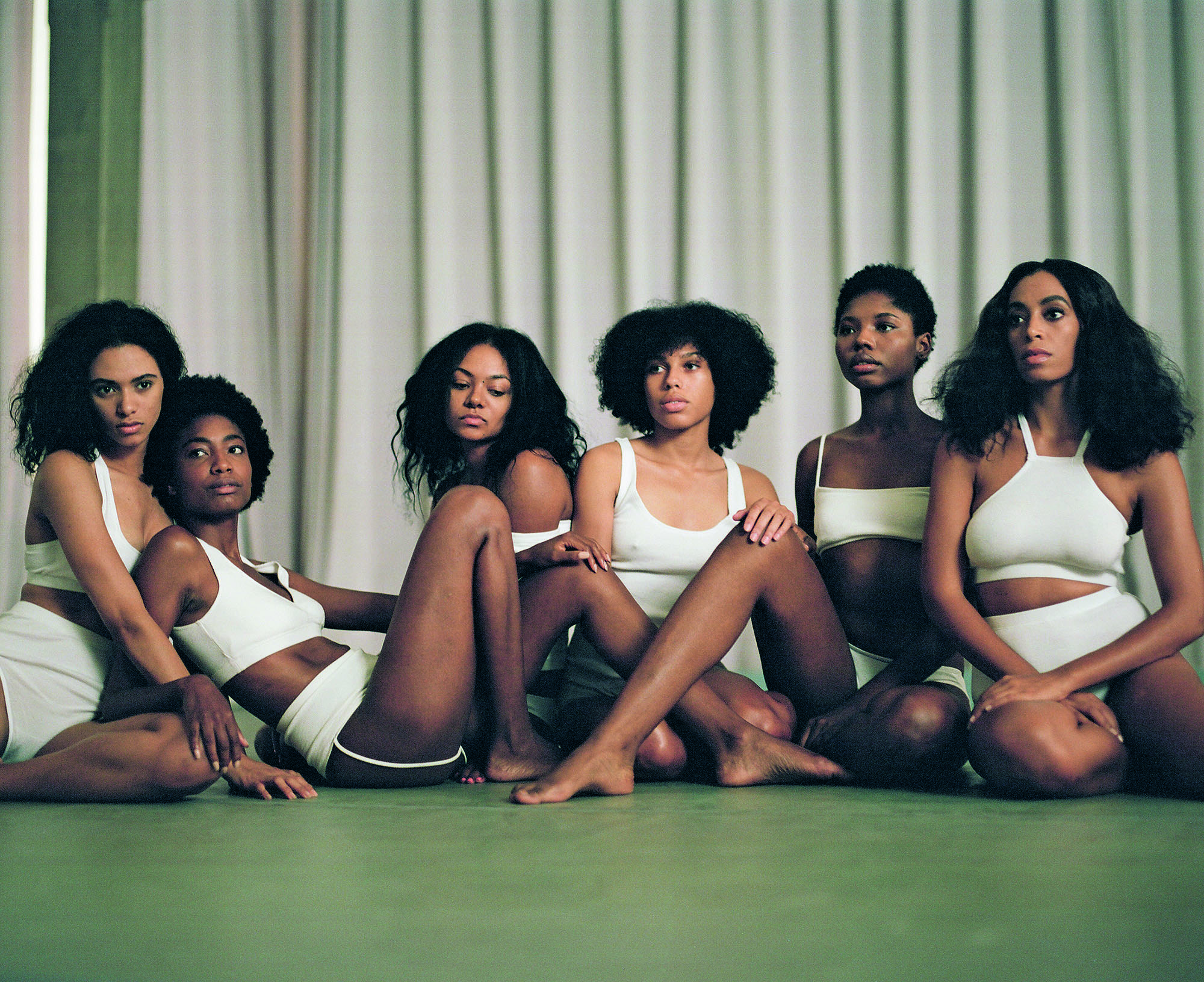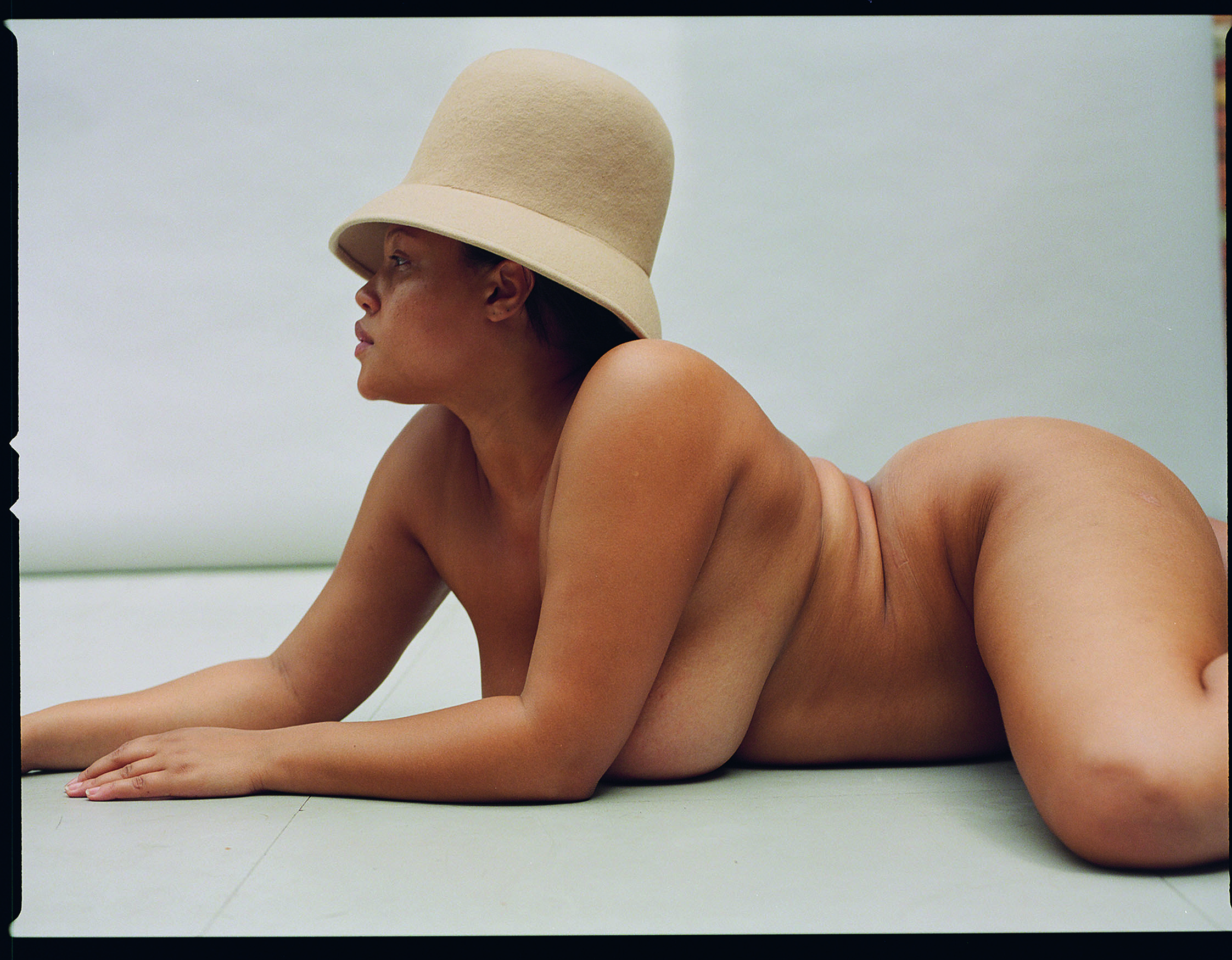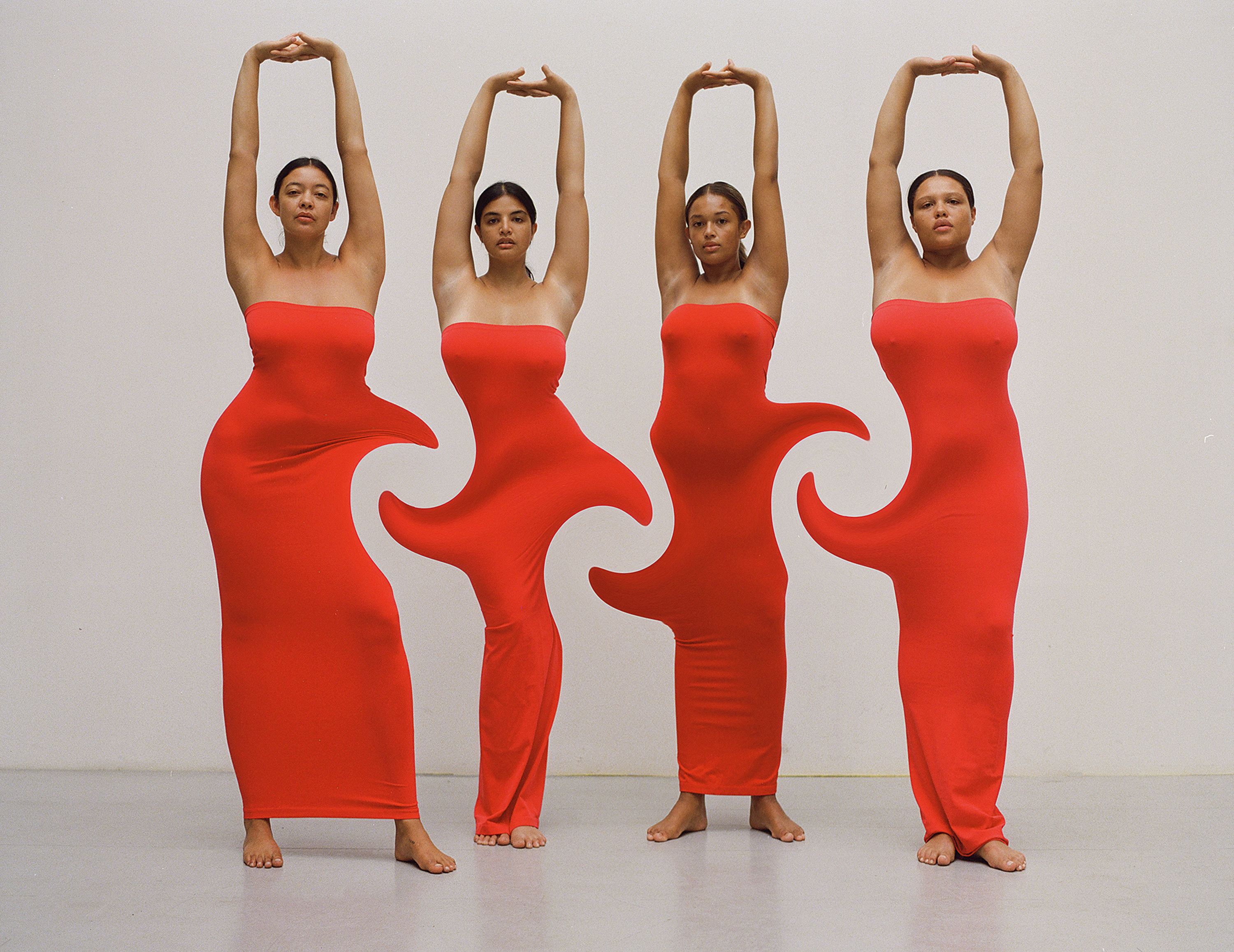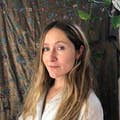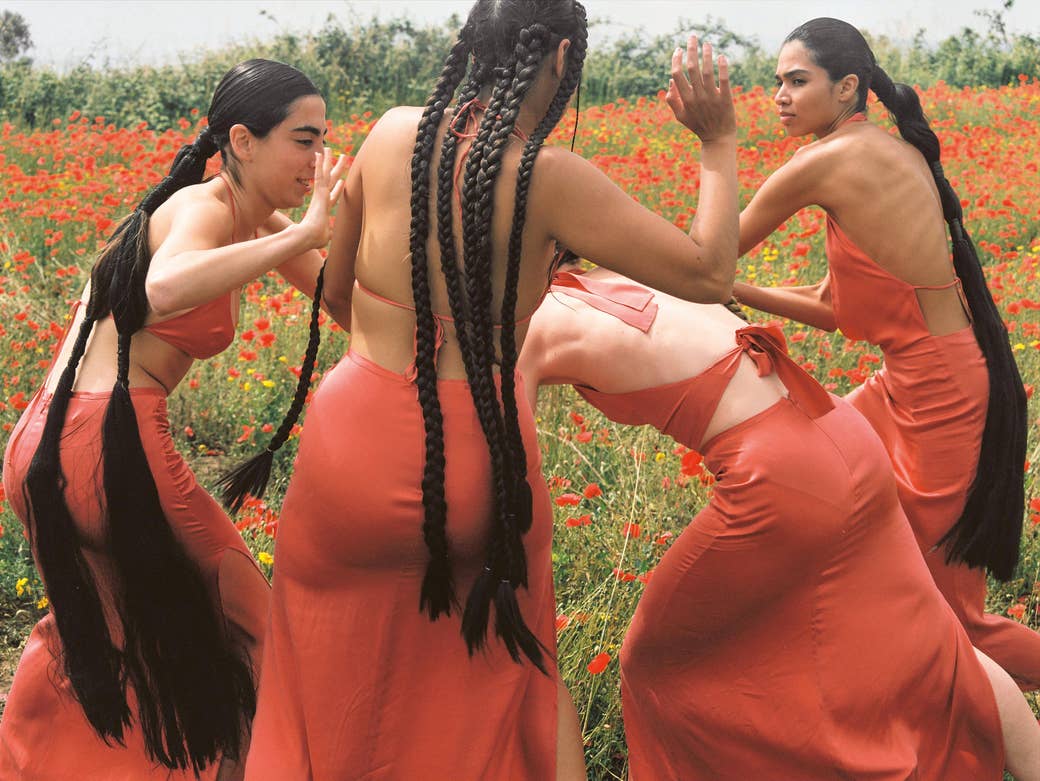
Carlota Guerrero is both a vision and a visionary — someone who dances herself into a trance to spur on good ideas. The photographer and filmmaker is based in Barcelona, where she rose to stardom after being tapped at age 24 to work with Solange on her album A Seat at the Table in 2016. Since then, she has photographed celebrities like Emilia Clarke and Rosalía, as well as produced many of her own ethereal images of groups of women.
She is warm, she is welcoming, and she has me feeling more acceptance and love for my body as a stranger on a Zoom call than I have in months. Her new book, Tengo un Dragón Dentro del Corazón, is a record of her work so far and the “closing of a chapter” as she looks to the future.
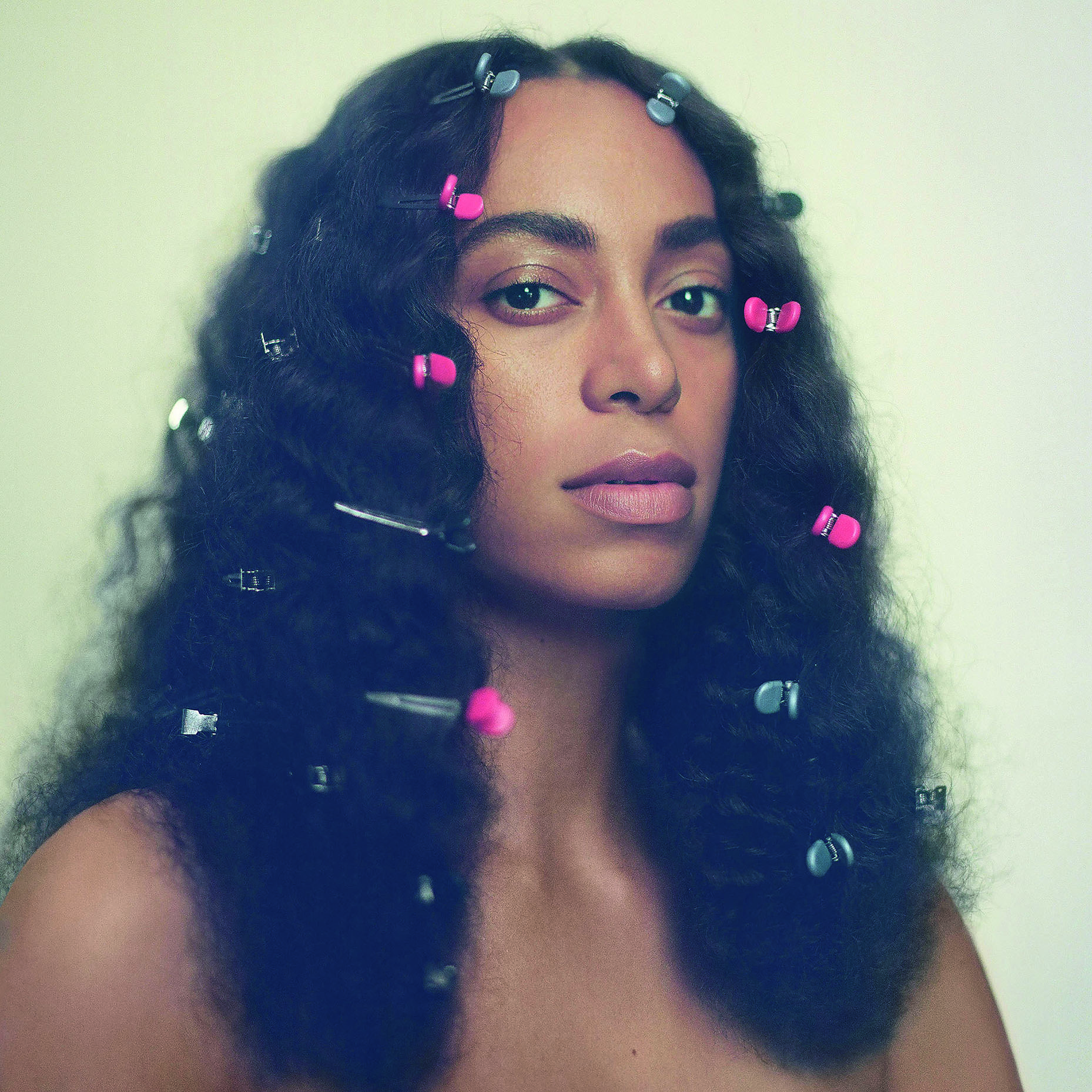
What was your experience like when you were first hired to do art direction and photography?
The first big commission was A Seat at the Table, with Solange. It was a crazy jump. I was sharing my personal work on social media and then that request came via Instagram DM. My first big job was flying by myself to the United States for the first time in my life, and spending two months there with Solange. It was crazy. I didn't have any experience. I look back now, and it took so much bravery and good intentions to create that body of work. It was a lot of understanding that complex story and telling it in a creative and beautiful way. All alone.
You picked up the camera at a young age. What did photography mean to you at that age, and how did you come to realize that this was what you wanted to do with your career?
It was the opposite. I knew I had a really strong creative force, but I couldn't find the path. I tried to paint. It didn't work. I tried to do collage, dance. It didn't work. I tried to express myself in all of these different mediums but I couldn't find a path. My friend Olga gave me a camera for my birthday when I was about 21, and I shot a roll without knowing how it worked. Every image was overexposed when they came back from the lab. But on that roll of film, everything looked like a painting. So that was a big moment for me.
I became obsessed. I couldn't stop taking photographs of everything. I was so inspired. I was spending time in the Mediterranean, being wild and free. I started photographing nature, naked friends there, and I came back to Barcelona and started creating my own ideas. All the mediums came together. I do a lot of performative work in my house with my friends, and the last part of it was shooting it with my camera, only then did it become a finished piece. I posted it on my Instagram and it became bigger.

Instagram can be a real positive boost. Did you ever have any moments of doubt in those days when you were still getting a foothold?
No. I didn't. When I discovered my path, I was on it. It was hard for me to picture how I could make money, how to make this into a career, but it’s the only clear thought I've ever had in my life — that I'm going to keep making images.
How would you describe your relationship with the app? Do you find it freeing, or limiting/censoring in any way?
I don't censor myself. I just censor the work enough so that Instagram doesn’t take it down. I think I have a super healthy relationship with it now. I used to have a really anxious one. In a way, it was my main tool to build my career. It was a sense of I need to put everything on there, like, this is my value, this is my portfolio, how international agents find me without an agency. I had to work a lot on really finding what it means to me, and trying to detach more. Now I use it to post, but I post it and I forget about it. I’m not waiting to see if it’s liked or not — I understand that it's just a game. I think TikTok is going to be the big thing now. I think Instagram is dying. I have a TikTok already, but it's not my cup of tea.
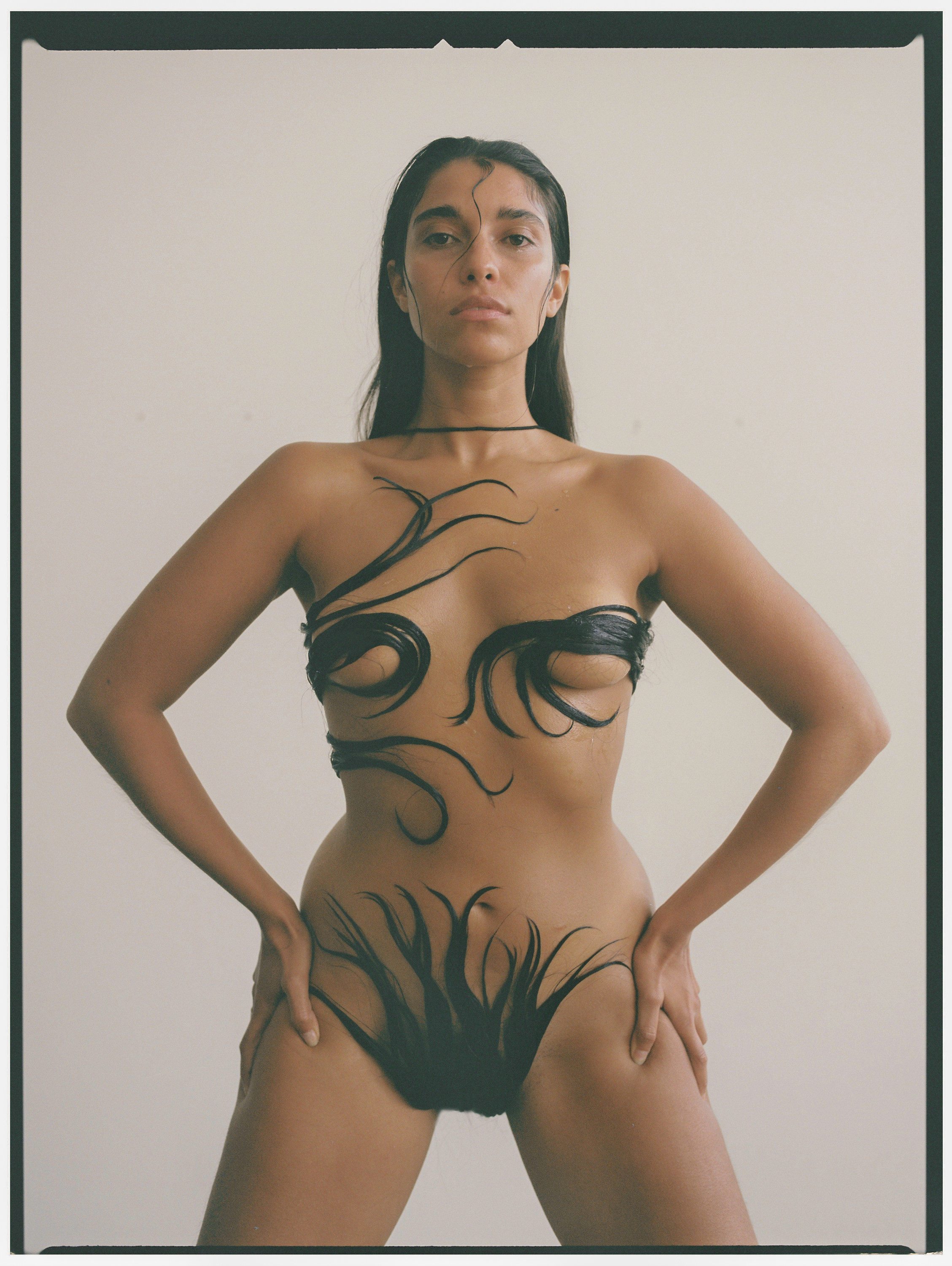
I was first introduced to your work with your image of your friend Alejandra Smits, the poet and writer, which I saw on Instagram and loved immediately. How do you collaborate with subjects?
That was for the release of Ale's book, and the book cover features a thunderstorm. We've been long-term friends, very close for a while. So I know her subject and the poetry she makes. I was trying to feel about her, herself, she was a thunderstorm, and we were trying to express that in a really organic way. I came up with the idea of showing her as a thunderstorm with her own hair. I was shivering when I was taking the photo; she had so much strength at that moment. We've worked together, so she trusted me with that concept.
I'm really lucky that the people who work with me connect with my work. They trust me and they open themselves up to something that they already know. They know that they are comfortable being naked; they pick the subjects. I always let them know the intentions and always ask if they're comfortable. I am always letting them know — it's constant communication asking them if they're OK. Then if we are inspired in the moment and something changed, if the bond is good, we can go ahead with that.
My work is me as a woman shooting other women. That's the resistance [to] the patriarchy of men deciding how our image was for many years. I understand my responsibility for the subject. They are not a blank canvas, and I never want them to feel that way I work on that all the time.
Has your relationship to your body changed your art, and how?
I think that I am in love with every woman. I see so much beauty in all of the bodies. I have, of course, dealt with women saying, “No, I hate this about my body.” But I look at them, and it clicks that there has been so much harm done on the way to self-love, and seeing so much beauty in every body [despite these insecurities] made me love my own body so much more. I tried to look at myself with the same love I was feeling looking at these women, and through that I could accept myself completely.
By putting myself a lot in my images also, I gained a lot of confidence and self-love, for sure.
That’s a huge accomplishment in general. How do you speak with other women about this when you photograph them — be it Emilia Clarke or Solange?
I am very verbal about beauty, about how gorgeous they look and about how brave they are, developing themselves and showing themselves naked to the world. I am very appreciative of the women that stand in front of my camera, and I try to let them know constantly. I try to show them the process. I make sure they like themselves. I ask if the lighting is OK. I check on them constantly to make sure everything is going well. Unless we really know each other and are used to working together, and then everything flows.
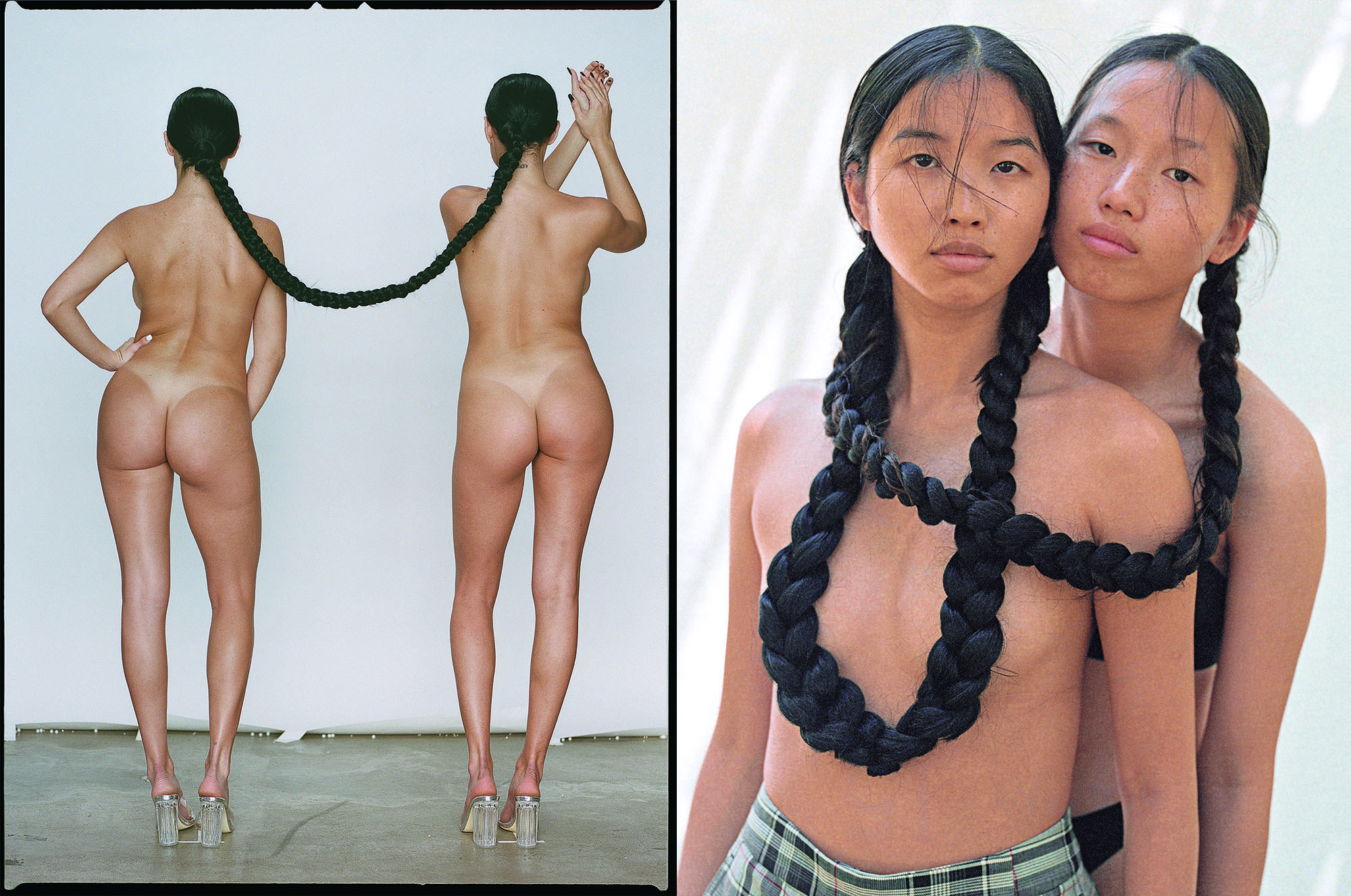
What advice would you give to young creatives who are just crafting their vision, or who perhaps have a vision but are struggling to get it out into the world?
My advice would be, I guess, don't overthink it. Craft is so much more important than we think it is in our rational mind. You can't let ideas die in the ideas limbo; you have to give birth to them. Even if you're not going to share them, even if you are not sure that they're going to be good. I couldn’t stop doing, doing, doing, and then once in a while something came out good enough that I wanted to share it with the world. But I have a lot of mistakes in my career, and terrible things that I made that I never share. The turning point was to never stop doing, and never stay in the fear of overthinking until something loses the point.
Who are your inspirations making work?
What has been more important to me is the influence that my friends and my mom had in my life. The feminine energy I had in my work inspired me so much. There are a lot of abstract inspirations that gave me the love and the support that I needed to express myself. I was much more inspired by the performance world than the photography world.
I lost my dad when I was 15, so I was raised by these amazing women, my mom and my sister. It was only the three of us. They were my main role models. The women who could deal with every problem that we had in such a graceful and strong way. I’ve always seen women the strongest; they are like superheroes for me. We give birth to babies, which is a miracle in our bodies. Women are incredible beings, and you can see that in my work.

What role does dance play in your work?
I really feel that my ideas are not mine. They are floating in space, and when I’m very connected, and my channel is open, I receive these ideas. A way from me to open my channel is by dancing. It’s really connected to the world of my images, because if I feel loved, I play some Alice Coltrane or Cuban music and I dance until I go into this really intense trance. My breath starts to get really heavy, and I get strong vivid images or ideas and I need to sit down and write them down, what came to me. It plays a really big role in the conception of the ideas. It’s really important on shoot days, too. I dance while I take pictures. It's always a way of flowing from one image to the next. I like to dance every day, all the time.
The title of the book is “tengo un dragón in my corazón,” [which means] “I have a dragon inside my heart.” That dragon for me was God, but not God, the energetic force that keeps me going. The title is something important to expand on people about. That creative force is a guide; it keeps me awake. Even if I'm sad or depressed, that dragon gives me the guide that I need. It has been super helpful, to give a name to your inner self.
What does the book mean to you?
I think it's a closing of a chapter for sure. The pandemic has put me, as everyone, in such a weird situation. I stopped for the first time in my career. I wasn't traveling. I wasn’t getting big jobs, big campaigns. It was just me with myself. I had the time for the first time to sit down, and rearrange my body of work, and create this conversation between images. The book is a circle; it starts as it finishes. It doesn’t have a temporal line.
Now I just rented a new studio. I did the renovation of all of it, and now I'm trying to find my new path. I know it's with women, I know it's with groups, I know it’s with performance. But I’m trying to rest a bit and wait for the next idea to come. Until I die, photography and dance are going to be super present in my life. I tried to quit for a while, but I realized it’s inescapable.
